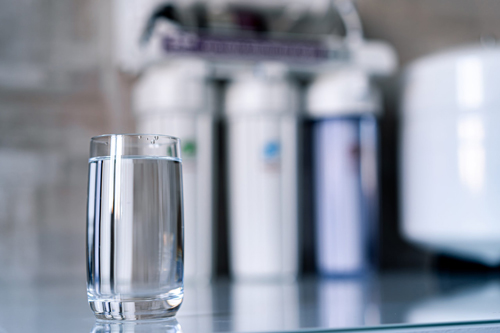Whether you are a business owner or a homeowner, you always want to ensure that the water on your property is clean and safe to drink. While water treatment plants take care of municipal water and remove some contaminants, others can be present in small amounts or are totally unregulated. The water at your home might have hazardous contaminants or chemicals inside of it, and it’s important to know the most common water contaminants and their risks so that you can manage yours. At Atlantic Blue Water Services, we are here to help.
The Types of Water Contaminants
Before we get into what common water contaminants might be in your water, you should understand the difference between primary, secondary and emerging water contaminants. Primary contaminants are captured in the Environmental Protection Agency’s National Primary Drinking Water Regulations, and they are governed by law to protect your health. Secondary contaminants are described in the National Secondary Drinking Water Regulations, which are not considered to be a health risk at specific levels. These contaminants are tested on a voluntary basis and often lead to water quality issues like an off taste or strange color. Finally, there are also emerging contaminants, which are known as Contaminants of Emerging Concern (CECs). These are things that are not formally regulated yet but that could have negative health impacts, like personal care products, pharmaceuticals, endocrine disrupters and other contaminants.

6 Common Water Contaminants: Primary Contaminants
- Coliform Bacteria: This includes things like E.coli, and it is regulated and measured by water treatment facilities. This bacteria is very dangerous and can lead to gastrointestinal issues and flu-like symptoms.
- Giardia: This can come from fecal waste and lead to gastrointestinal upset. Giardia is commonly a waterborne illness and can be found in groundwater, rivers and lakes.
- Legionella: This bacteria leads to legionnaire’s disease, which is very serious and a respiratory illness.
- Arsenic: Arsenic naturally occurs in rocks and soil, but it is incredibly toxic and dangerous. It can cause cancers and cardiovascular and neurological conditions.
- Copper: Copper can be very dangerous in drinking water if you are taking it in over the short or long term. It is commonly found in homes due to copper pipes leaching into the water supply, especially if the pH of the water is elevated. Short-term exposure can lead to stomach issues and long-term exposure can cause kidney and liver problems.
- Lead: Water that contains lead can occur due to corroded lead pipes leaching lead into the water supply. Lead can be harmful even at low levels, especially for children and infants who can experience neurological damage and serious developmental issues.
4 Common Water Contaminants: Secondary Contaminants
- Aluminum: Aluminum is very common in the earth’s crust, which means that it can easily enter groundwater supplies and your water. There is a mild health risk for patients who have dialysis, but in small quantities aluminum is not hazardous.
- Iron: Iron is a very common water contaminant, and it does not come with health concerns but can be aesthetically unpleasing. Orange staining, clogs in your pipes from iron-feeding bacteria and a metallic taste are all common.
- Sulfur: Sulfur can lead to many unpleasant water issues, and you might be able to recognize it immediately due to the rotten egg smell. High levels of sulfur can also lead to an off taste in your water.
- Calcium and Magnesium: These two minerals lead to what you might know as water hardness. They are common water contaminants that aren’t dangerous to human health but that can be dangerous to your clothing, appliances and dishes. We can help test your water and determine the right water softening solution to make your water soft again.
2 Common Water Contaminants: Emerging Contaminants
- Pharmaceuticals: Prescription medications and over the counter drugs all emerge in the water supply when they are flushed down the toilet or, depending on the medication, excreted in human waste. Antibiotics, steroids, antidepressants and contraceptives can all be found in drinking water because some of them are not able to be completely removed by wastewater treatment plants.
- Personal Care Products: Some studies are finding that traces of bath and beauty products, like perfumed products and microplastic beads, can be found in the water supply and contaminate surface water as they go down the drain. These are particularly dangerous for local ecosystems and aquatic life.
Regardless of what is in your water, Atlantic Blue Water Services can help to improve it.
Call Atlantic Blue Water Services for Water Testing and Filtration Solutions That Get Results
Atlantic Blue Water Services is here to help homeowners, home sellers, home buyers and business owners in need of a quality water test. Call us today to schedule your water testing at 410-840-2583.
